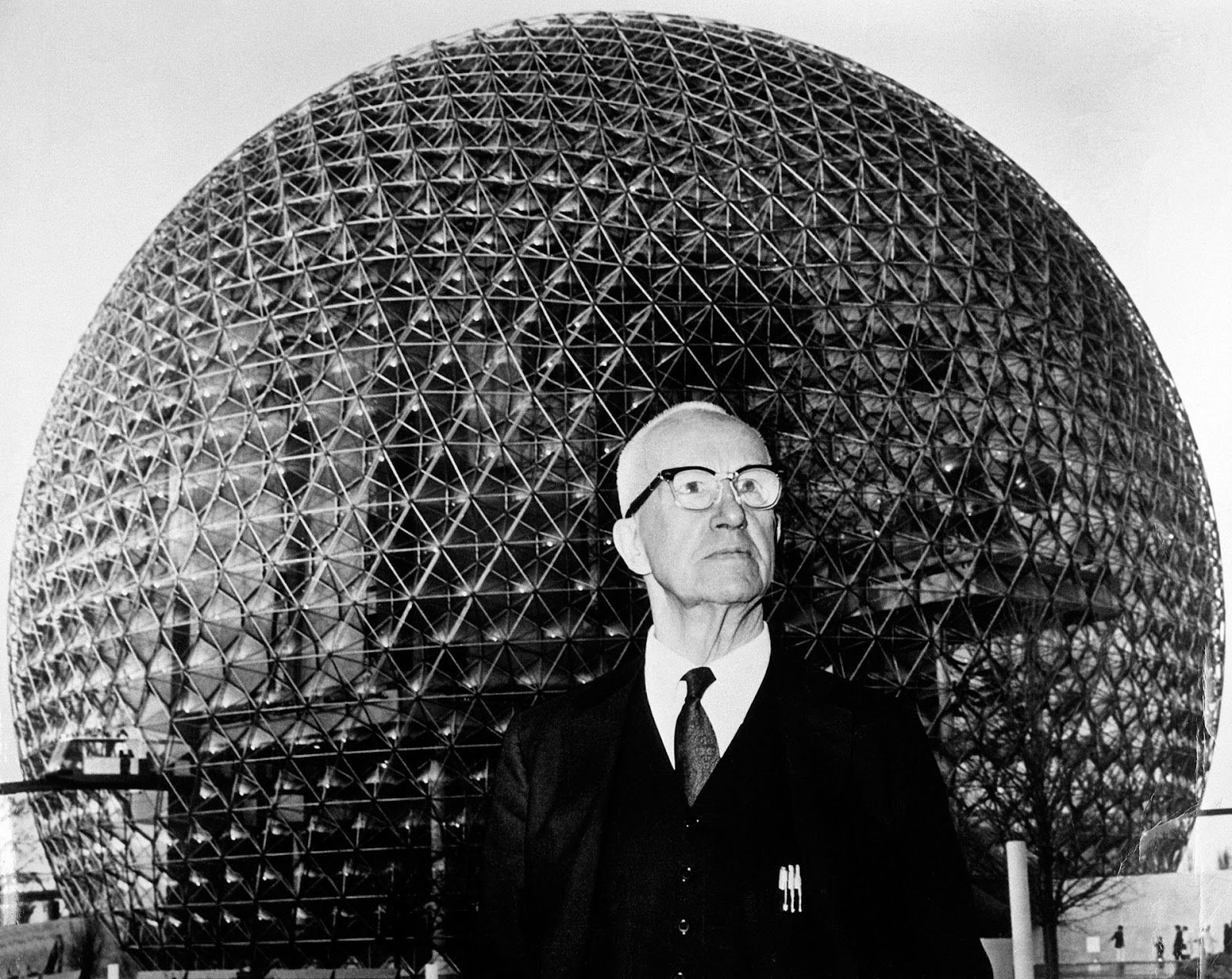Architecture is a special brand of creation. While some artforms are becoming entirely digital, buildings stand tall for hundreds, even thousands of years. This Monday, start your week off with wisdom from Frank Gehry and other architects who have ideated structures that will outlive them for centuries to come. Even though your chosen artform may not become a staple of a metropolitan skyline, with guidance from these legendary figures your creations can persist for thousands of years.
QUICK LINKS

Buckminster Fuller Never Stopped Experimenting.
Buckminster Fuller was a renowned polymath who considered himself a “comprehensive anticipatory design scientist” working in housing, shelter, transportation, education, energy, ecology, and poverty. According to the Buckminster Fuller Institute , throughout the course of his life Fuller held 28 patents, authored 28 books, and received 47 honorary degrees.
What kind of mindset does it take to achieve such widespread expertise?
- “Every time a man makes a new experiment he learns more. He can not learn less.” – Buckminster Fuller
If someone frequently tries new things; new experiments, they frequently open their mind to new information. Do you think any of Buckminster Fuller’s experiments “failed”? Most definitely, but regardless of the outcome, he still learned more with every new experiment.
The great thing about creating art is that there is no right or wrong answer like in scientific experiments. There is no way to “succeed” or “fail.” It’s all a process. It’s all experimentation, and so every new creation presents an opportunity to learn. When was the last time you tried a new experiment with your creativity?

The Thrill of the Unknown With Frank Gehry.
Frank Gehry’s work as an architect is unmistakable. For those reading from ICON’s home city of Los Angeles, you have undoubtedly seen the contorting geometric masterpiece that is Walt Disney Hall in DTLA (a miniature is pictured above on the right), but Gehry has lent his talents to hotels, museums, and other structures all over the world.
Looking at these buildings, how do you think Frank Gehry envisioned these misshapen forms? Well the answer is, he didn’t.
Why does everyone hate learning the ending to a story before reaching it on their own? Because it makes the beginning and middle of the story pointless! There is no more suspense and excitement. The thrill is found in not knowing, but going forward anyway.
Now imagine if someone knew exactly what would happen when they sat down to create. Imagine creating with no possibility of surprise. Does that sound enjoyable? Unlike a story in a movie or a book, this story comes from within. Your creations are the story of you, and you can enjoy it to the fullest by diving into the unknown.

We Are All Of Nature, Including Antoni Gaudi.
In researching Antoni Gaudi’s architecture, which includes some of the most celebrated buildings in history like La Sagrada Família (above) and Casa Vincens, one influence is repeatedly associated with his work: nature. Gaudi is known for inlaying natural forms into his various structures, but this influence from nature brings about a deeper question:
What makes something a “natural” form? Aren’t all forms in the world technically “natural” forms? Gaudi thought so:
- “Nothing is invented, for it’s written in nature first.” – Antoni Gaudi
Gaudi considered himself, all humans, and all human ideas a part of nature. Therefore he couldn’t “invent” anything. He could only borrow or reconfigure or honor things that already existed in the world around him. How do you think that mindset affected his creative process?
So often artists are concerned with being fresh and original. Concerned with creating something another artist hasn’t. With inventing something new. Well, according to Gaudi, nature already got their first, so why not create just to create? Why not honor nature as best you can?

Turn your passion for music into a Profession: Learn more about our Music School Programs!
MORE ARTICLES FROM THE ICON BLOG

FIND YOUR SOUND, HONE YOUR CRAFT:
Are you ready to turn music into a career? ICON prepares students to become music producers, composers, performers, recording artists, professional DJs, and entrepreneurs in the entertainment industry. Click below to get information about our award-winning programs:

